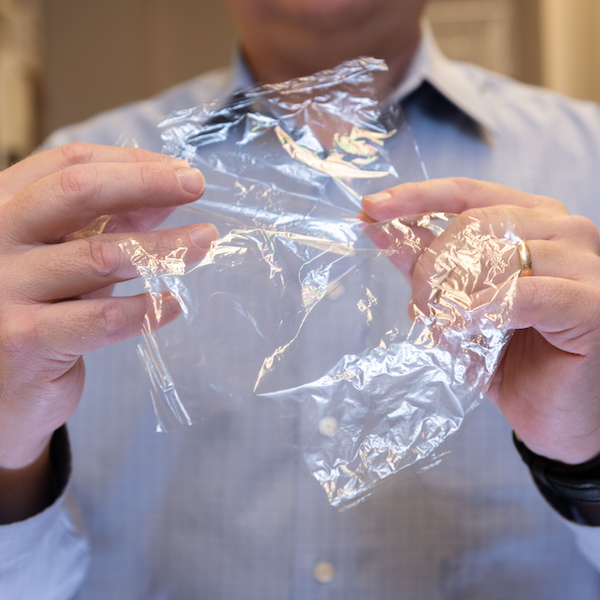Inventors at Georgia Tech have created a method for producing plastic films made from poly (glucuronic acid), chitosan, and PEG (polyethylene glycol) to protect products from exposure to oxygen, carbon dioxide, water, and a variety of other gas species. The elements have oxygen permeability lower than PET and water vapor permeability that is similar. The method for fabrication utilizes the TEMPO oxidation procedure to produce poly(glucuronic acid) from cellulose, and allows for crosslinking of chitosan and poly(glucuronic acid), following a heat treatment, into free-standing films. Resulting films have improved flexibility compared to neat cellulose or chitin films. Through utilization of this procedure, the resulting membranes have oxygen barrier properties that are lower than many well-known engineering polymers. This unique extraction and processing method allows for chitin to be formed into self-standing films that can be handled as a single sheet without compromising the properties of the chitin nanofibers. These pure chitin films show high stiffness, strength, and favorable barrier properties to protect against exposure to oxygen, carbon dioxide, water, and a variety of other gas species.This is the first reported use of these three components to form membranes with high oxygen barrier properties.
- Environmentally friendly – made from renewable materials and biodegradable
- Competitive – permeability comparable or better than industry standard
- Cheap – made from a low cost and renewable resources
- Sanitary – natural anti-bacterial activity
- Favorable Properties – high optical transparency, tensile strength, flexibility, and gas barrier properties
- Food and beverage packaging
- Medicine packaging
- Protective bags for personal use
- Long term preservation bags
- Electronics and batteries packaging
There is immense interest in producing packaging plastics from renewable resources. Plastics are often used to protect food from oxygen and water, and due to not being produced by renewable resources, they are difficult to recycle or biodegrade. Chitin, a natural sugar compound and the second most abundant biopolymer in nature, is a sought after bio-derived material for its high stiffness, strength, and protective barrier properties and its natural nanofiber structure. Current extraction and processing techniques rely on strong acids and bases or volatile organic solvents that reduce chitin’s sustainability and diminish its natural properties. Thus, there is a need for a processing method that retains the properties of chitin while producing a functional product.

J. Carson Meredith, a professor in Georgia Tech's School of Chemical and Biomolecular Engineering, holds the new packaging material made from crab shell-sourced chitin and cellulose sourced from tree fibers. (Credit: Allison Carter)
